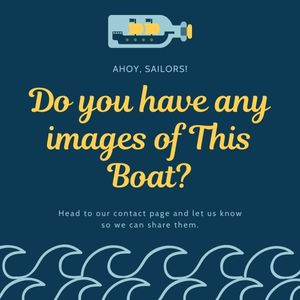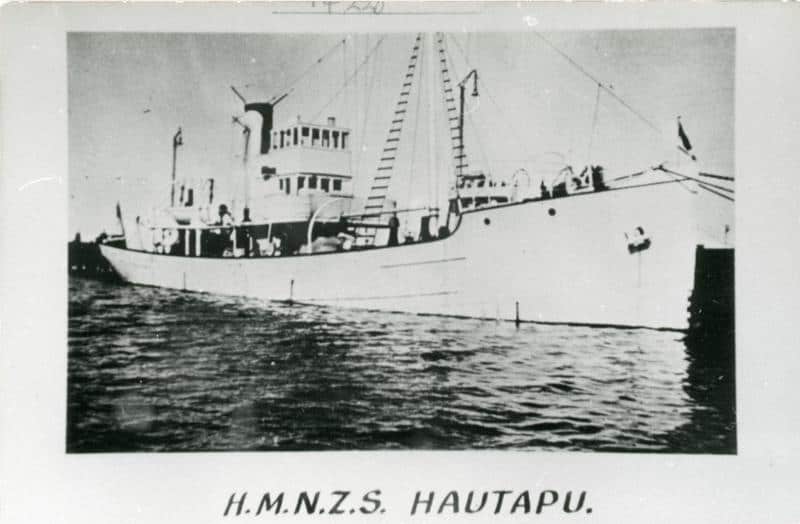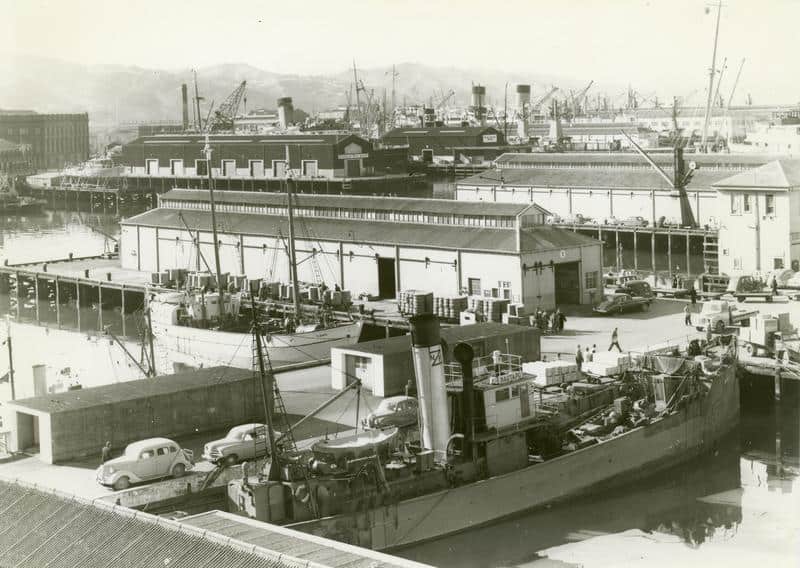Build Date
1942
Boat Builder
Stevenson & Cook Engineering Co. Ltd.
Length
Unknown
Beam
Unknown
Hautapu’s Naval Career
Hautapu was built by Stevenson & Cook Engineering Co. Ltd., out of steel for the Royal New Zealand Navy. She was launched on the 19th Noevember 1942 and commissioned not quite a year later on the 28 July 1943. She was a ‘Castle’ class minesweeper serving out of Lyttleton on the 96 Auxilary Minesweeping Group. Hautapu’s work involved sweeping the harbour entrance for mines every day and execortinf submarines and warships in and out of the harbour.
In August 1945 Hautapu was reassigned to the Canterbury Project which tested atmospheric effects of long-range radar. She started work her in April 1946 but only a year later on the 12 April 1947 Hautapu travelled to Auckland and was transferred to the marine department. They carried out a two month refit and she returned to the Canterbury Project with a civilian crew in July 1947.
When the Canterbury Project ended Hautapu was put up for sale and NZ Fisheries purchased her. On the 18 December 1947 she arrived in Wellington for more alterations, this time to prepare her for work as a side trawler. They also removed the coal fired engine and replaced it with an oil burning engine. This started several years of successful fishing out of Wellington. On her first fishing trup she puled un 50 cases of fish.
Hautapu Runs Aground
But Hautapu’s fishing career would be cut short after she hit a submerged object which damaged her rudder and caused her to run aground south of Cape Campbell at 10.30pm. Hautapu had 8 crew on board who were unharmed but she was stuck on the beach, pounded by waves and developing a starboard list. The crew sent out a mayday and set of a flare but no one responded so they stayed on their ship stuck on the beach with water flooding inside until dawn.
When it was light three of the crew launched their rubber raft to make it to shore and raise the alarm but that was easier said than done. Their raft capsized almost frowning one crew member who caught in the lines and sending the other two into the sea. These two made it o shore but were unable to do much more after being thrown around by the sea. So the skipper Captain Bill Muir decided to swim ashore with a line that could be secured for the rest of the crew to follow to shore. When they had everyone on the beach Muir set off with crewman Michael O-Regan on the three hour climb find help.
They found Mr G. Harrington who lived at a farm cottage and was able to raise the alarm. He also helped rescue the rest of the crew and set them up in the shearers quarters. The eight man crew from Wellington had all survived. The crew members included the skipper Muir, mate Tony Hubbard, the Chief Engineer Gerald Wagstaff, the assistant engineer Albert Penaiki, deckhands John Boyle, Michael O’Regan and Brian Gates and Frank Leach the cook.
What to do with Hautapu now?
Hautapu was not saved though and several years of figuring out what to do with Hautapu followed. Firstly, she was still stuck on the beach getting flooded by the sea. A Lloyds assessor was appointed to inspect Hautapu and the Lyttleton boatbuilder Mr A. France inspected her. Although they believed Hautapu was salvageable there would be several failed attempts to pull her off the beach and she would languish there for six months until the Perano whaling boat Tuatea would refloat her.
On the 30th April 1964 Hautapu finally made it home to Wellington but she was significantly damaged by the sea and people with port holes smashed in by waves and her equipment and her steering wheel stolen. Despite her state NZ Fisheries first thought she would be repaired so they slipped her and started another inspection. This found Hautapu was beyond repair and with their other similar vessel Taiaroa running, Hautapu was surplice to requirements. Their new plan was to lay her up at shelley bay to use for parts for Taiaroa.
This plan wouldn’t work out through so NZ Fisheries offered Hautapu to the Royal New Zealand Air Force for target practise. They accepted and the Defence Department started arranging for Hautapu to be towed out to Cook Strait and sunk off Cape Palliser on the 31 May 1966. This was an area where many boats have been sunk over the years. But this had to be postponed because the coastal vessel Kaitawa sank off Cape Reinga, The Inverell was sent to search for the wreck which was found near Pandora Bank.

Hautapu is Blown Up Early
Only a few days after her sinking was scheduled on the 2 June 1966 Hautapu sank at her berth in Shelley Bay Air Force Base. Only she didn’t just sink the base was woken up an explosion at 1.30am and Hautapu was found with only her bow afloat. The police investigated the explosion but nobody has ever been found responsible.
This is not the end of Hauptapu’s story though as years of arguing over who was responsible for the clean up ensued. The Wellington Harbour Board clearly wanted Hauptapu removed, NZ Fisheries didn’t want that responsibility as they had gifted the boat to the Defence Department who argued Hautapu was still registered as belonging to NZ Fisheries Ltd. The Crown Law Office even got involved but it never went to court. Eventually the Wellington Harbour Board and the Defence Department agreed to a joint endeavour to remove Hautapu from the shore though the Harbour Board still would not take financial responsibility.
So in July 1972 Navy divers started cutting Hautapu into 5 60-80 tonne chunks that could be lifted out by the crane Hikitia. These would be lifted onto Miramar Wharf where they could then be removed for scrap. To cut Hautapu up they need more than 340 explosions to let off gas build up during the cutting. This project was completed on the 29 March 1973, seven years after Hautapu sunk
References
To research Hautapu we used the book Nets, Lines and Pots: a History of New Zealand Fishing Vessels Vol 2, The Shipwreck Saga,
Related Posts
Majestic – Commercial fishing boat, a World War Two service vessel and is now a pleasure boat.
Pearl Kasper – 77ft George Niccol scow used to build WWII gun emplacements.
Marilyn – 112 ft NZ Navy vessel built in 1943 and deployed during WWII.
Karaka – Worked the Wellington Harbour before starting her 71 year long oyster fishing career.



